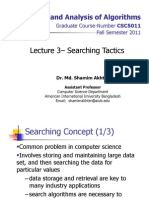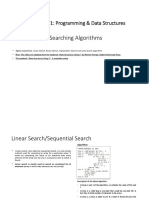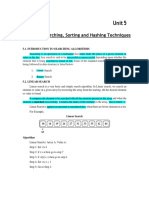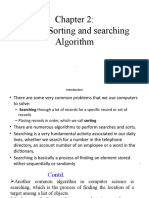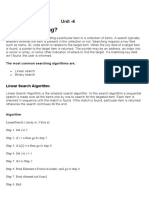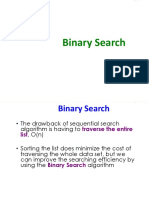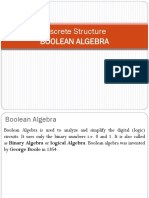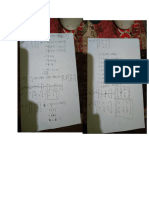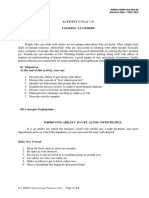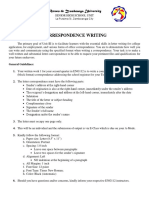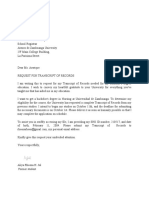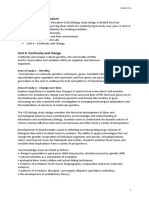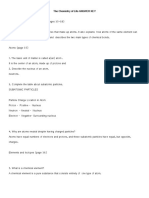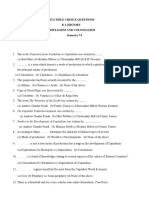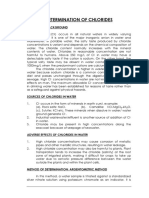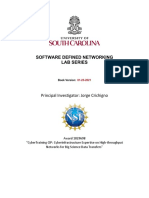0% found this document useful (0 votes)
19 views16 pagesTopic 9 - Search Algorithms
The document discusses three search algorithms: linear search, binary search, and interpolation search. Linear search sequentially checks each element to find a match and has complexity of O(N). Binary search recursively halves the search space after each comparison and works only on sorted arrays with complexity of O(log N). Interpolation search uses interpolation to estimate the position of the target value in a uniformly distributed sorted array.
Uploaded by
Ahmadnur JulCopyright
© © All Rights Reserved
We take content rights seriously. If you suspect this is your content, claim it here.
Available Formats
Download as PPTX, PDF, TXT or read online on Scribd
0% found this document useful (0 votes)
19 views16 pagesTopic 9 - Search Algorithms
The document discusses three search algorithms: linear search, binary search, and interpolation search. Linear search sequentially checks each element to find a match and has complexity of O(N). Binary search recursively halves the search space after each comparison and works only on sorted arrays with complexity of O(log N). Interpolation search uses interpolation to estimate the position of the target value in a uniformly distributed sorted array.
Uploaded by
Ahmadnur JulCopyright
© © All Rights Reserved
We take content rights seriously. If you suspect this is your content, claim it here.
Available Formats
Download as PPTX, PDF, TXT or read online on Scribd
/ 16










